You’ll experience significant improvements in mobility and balance by incorporating three essential stretches that specifically target the hip flexors, hamstrings, and shoulders—the areas most affected by age-related stiffness. The seated hamstring stretch reduces lower body tension, while the seated hip flexor stretch enhances your range of motion for daily activities. Adding ankle circles maintains joint flexibility and circulation. Hold each stretch for 10-30 seconds, practicing at least three times weekly to combat muscle stiffness and reduce fall risk while maintaining your independence as you age.
Essential Stretches That Combat Age-Related Stiffness
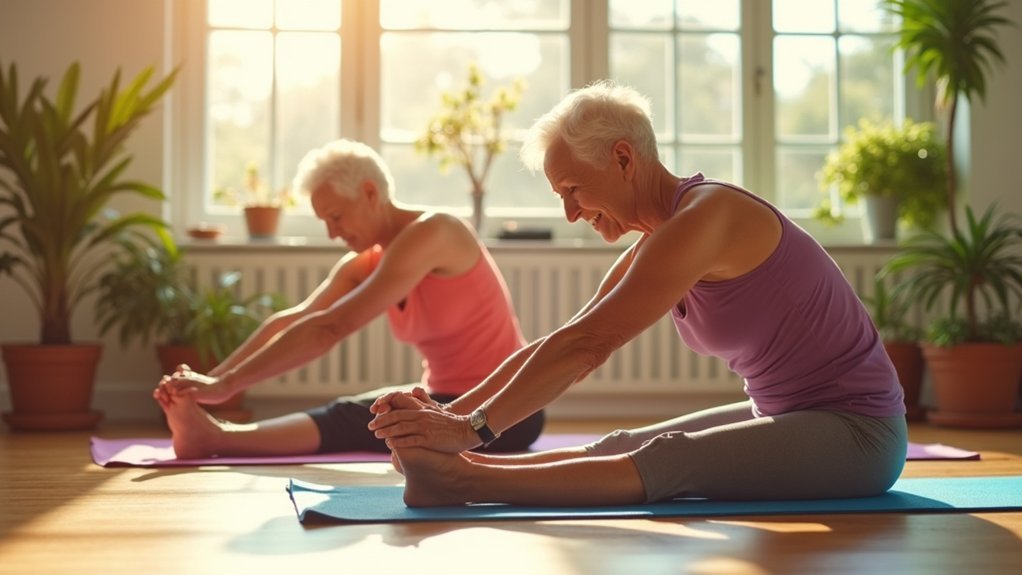
As your body ages, stiffness creeps into muscles and joints, making simple movements like reaching for a high shelf or bending to tie your shoes increasingly challenging.
Stretching exercises become your secret weapon against age-related stiffness, helping maintain the muscle pliability needed for daily activities.
Stretching serves as your ultimate defense against muscle stiffness, preserving the flexibility essential for effortless daily movement.
Static stretching targets key areas like hip flexors and quadriceps muscle, which tighten considerably with age. You’ll improve flexibility by holding each stretch for 10-30 seconds, performing them at least three times weekly.
This consistent practice will reduce stiffness and enhance your mobility, making everyday tasks feel effortless again.
Regular stretching doesn’t just combat stiffness—it improves balance and reduces fall risk.
Top Physical Therapist-Recommended Movements for Seniors
When physical therapists design movement programs for seniors, they prioritize stretches that deliver maximum mobility benefits with minimal injury risk.
These professionals recommend specific movements that target common problem areas while enhancing overall flexibility and balance.
Here are the top physical therapist-recommended stretches for seniors:
- Seated Hamstring Stretch – Improves lower body flexibility and reduces muscle pain
- Seated Hip Flexor Stretch – Enhances range of motion for daily activities
- Standing Child’s Pose – Dynamic stretching that prepares muscles for movement
- Walking Lunge – Builds mobility while improving balance and coordination
- Ankle Circles – Maintains joint flexibility and circulation
Physical therapists emphasize performing these stretching exercises three times weekly, holding each position for 10-30 seconds with 3-4 repetitions for ideal results.
Daily Stretching Routine for Improved Mobility and Balance
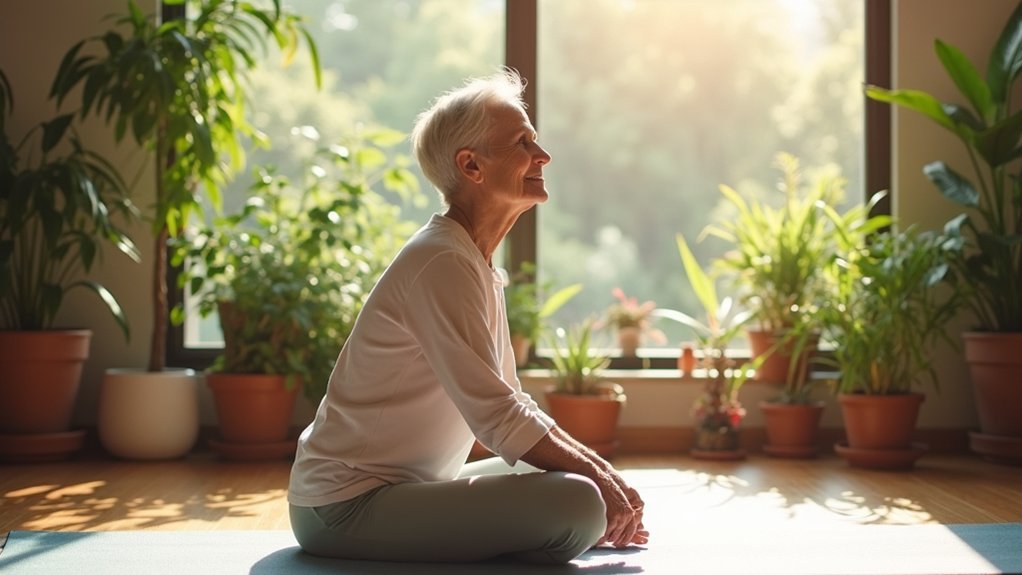
Building on these expert-recommended movements, establishing a consistent daily stretching routine transforms your mobility and balance over time.
You’ll want to include both static and dynamic stretching exercises targeting major muscle groups like hamstrings, hip flexors, and shoulders. Hold each stretch for 10-30 seconds with 3-4 repetitions to improve mobility and flexibility effectively.
Focus on movements like standing calf stretches and seated knee-to-chest stretches that reduce stiffness in your lower body. These exercises enhance coordination and markedly lower your risk of falls – a critical safety concern for seniors.
Practice your daily stretching routine at least three times weekly for best results. Consistency creates gradual improvements in your overall wellness, making everyday activities easier and maintaining your independence as you age.
Frequently Asked Questions
Can a 70 Year Old Regain Flexibility?
Yes, you can regain flexibility at 70 through regular stretching exercises. You’ll improve range of motion and reduce stiffness by practicing static and dynamic stretches at least three times weekly.
Does Stretching Help With Aging?
Yes, stretching considerably helps with aging by maintaining your flexibility, reducing stiffness, and improving balance. You’ll experience less pain, better mobility for daily activities, and enhanced mental well-being through consistent stretching routines.
What Type of Stretching Is Most Advisable for a Senior Fitness Program?
You should focus on static stretching, holding each position for 10-30 seconds. It’s safest for your aging body, improving flexibility without injury risk while targeting major muscle groups effectively.
What Is the Healthiest Form of Stretching?
You’ll find static stretching is the healthiest form, where you hold positions for 10-30 seconds. It’s safe, effective, and reduces injury risk while improving flexibility and range of motion.
In Summary
You’ll notice significant improvements in your mobility and overall comfort when you consistently practice these three essential stretches. Don’t wait until stiffness becomes overwhelming – start incorporating these movements into your daily routine today. Remember, you’re investing in your long-term wellness and independence. Listen to your body, move within your comfort zone, and gradually increase your range of motion. Your aging body will thank you for this commitment to staying active and flexible.

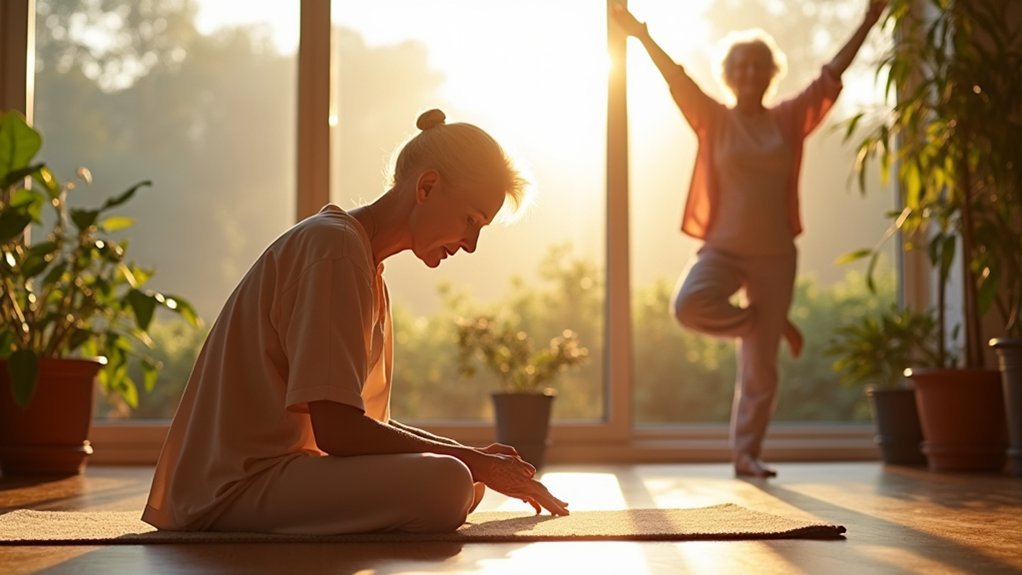
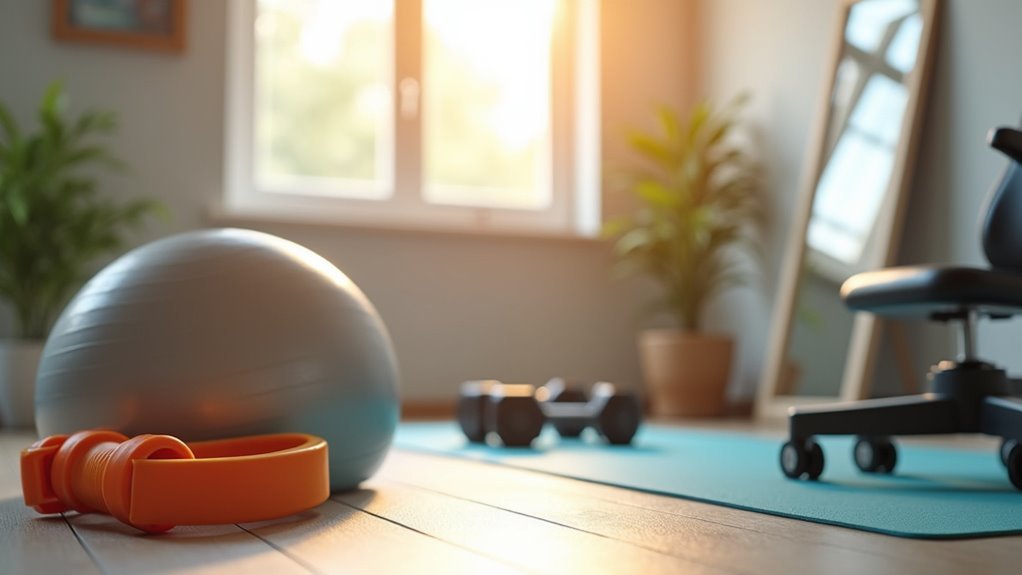
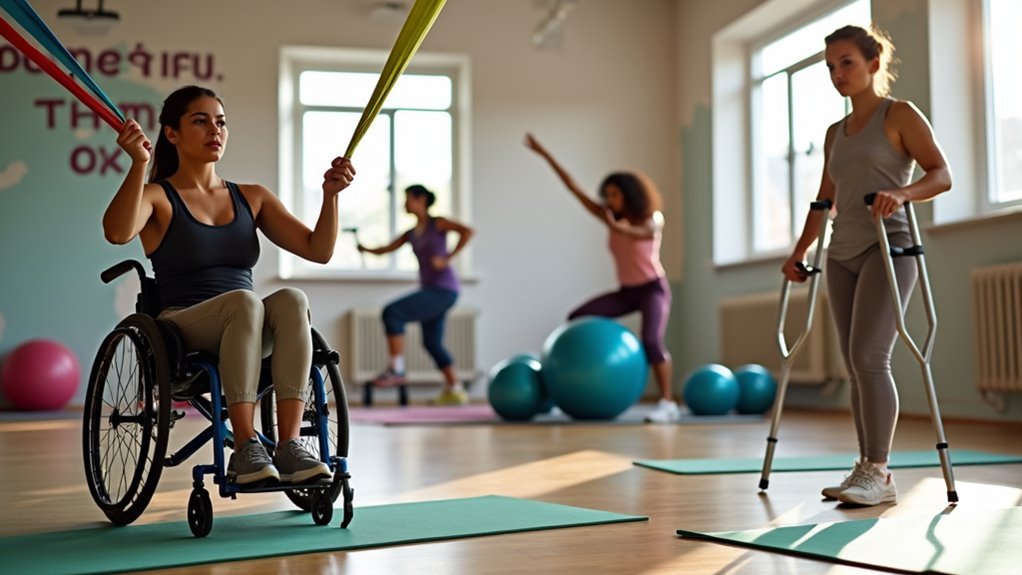
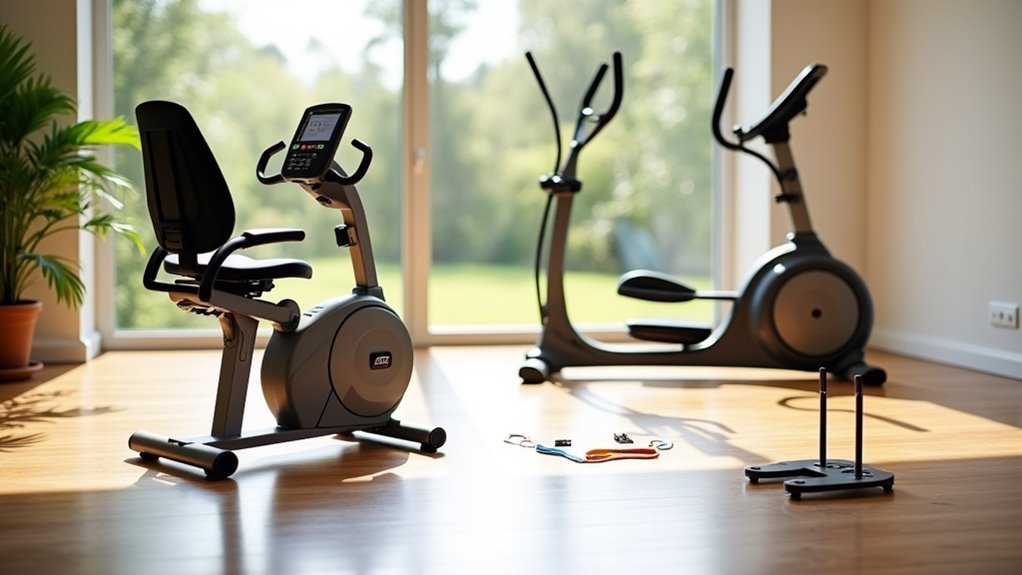
Leave a Reply